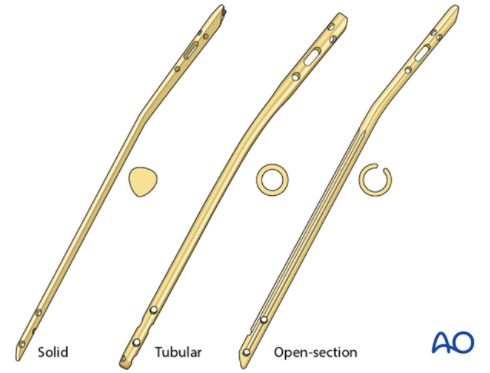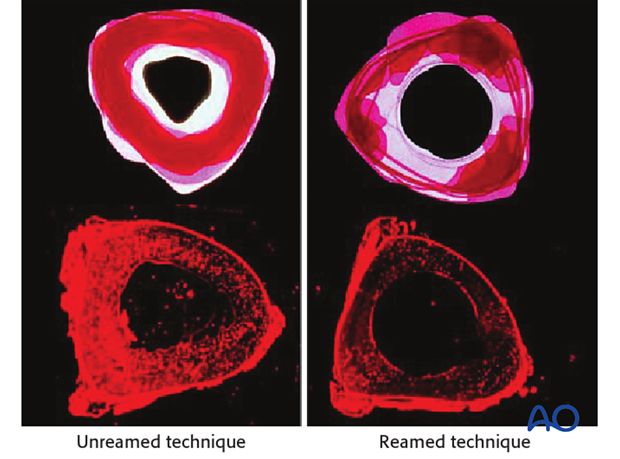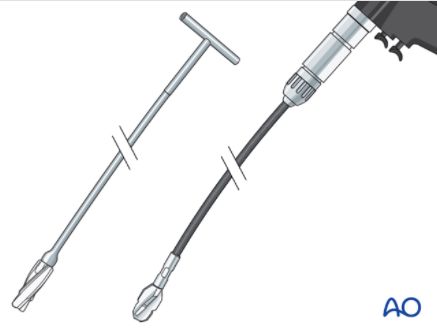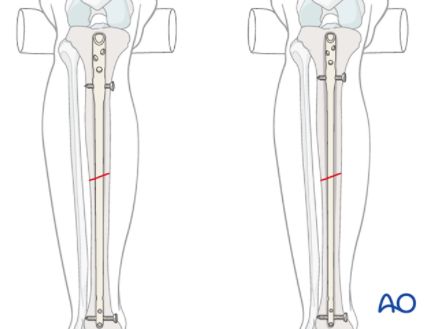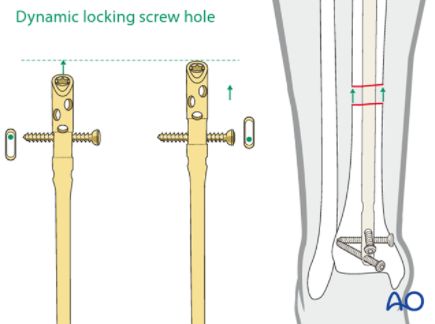Intramedullary nailing technology is a commonly used orthopedic internal fixation method. Its history can be traced back to the 1940s. It is widely used in the treatment of long bone fractures, nonunions, etc., by placing an intramedullary nail in the center of the medullary cavity. Fix the fracture site. In these issues, we will introduce relevant content to you around intramedullary nails.
Simply put, an intramedullary nail is a long structure with multiple locking screw holes at both ends to fix the proximal and distal ends of the fracture. According to different structures, they can be divided into solid, tubular, open-section, etc., which are suitable for different patients. For example, solid intramedullary nails are relatively resistant to infection because they have no internal dead space. Better ability.
Taking the tibia as an example, the diameter of the medullary cavity varies greatly in different patients. According to whether reaming is needed, intramedullary nails can be divided into reamed nailing and non-reamed nailing. The difference lies in whether reamers need to be used for medullary reaming, including manual or electric devices, etc., and successively larger drill bits are used to enlarge the medullary cavity to accommodate larger diameter intramedullary nails.
However, the process of marrow expansion damages the endosteum, as shown in the figure, and affects part of the blood supply source of the bone, which may lead to temporary avascular necrosis of local bones and increase the risk of infection. However, it is related Clinical studies deny that there is a significant difference. There are also opinions that affirm the value of medullary reaming. On the one hand, intramedullary nails with larger diameters can be used for medullary reaming. The strength and durability increase with the increase in diameter, and the contact area with the medullary cavity increases. There is also a view that the small bone chips produced during the process of marrow expansion also play a certain role in autologous bone transplantation.
The main argument supporting the non-reaming method is that it can reduce the risk of infection and pulmonary embolism, but what cannot be ignored is that its thinner diameter brings weaker mechanical properties, resulting in a higher reoperation rate. Currently, most tibial intramedullary nails tend to use expanded intramedullary nails, but the pros and cons still need to be weighed based on the patient’s medullary cavity size and fracture conditions. The requirement for the reamer is to reduce friction during cutting and have a deep flute and a small diameter shaft, thereby reducing the pressure in the medullary cavity and avoiding overheating of bones and soft tissues caused by friction. Necrosis.
After the intramedullary nail is inserted, screw fixation is required. Traditional screw position fixation is called static locking, and some people believe that it may cause delayed healing. As an improvement, some locking screw holes are designed into an oval shape, which is called dynamic locking.
The above is an introduction to the components of intramedullary nailing. In the next issue, we will share with you the brief process of intramedullary nailing surgery.
Post time: Sep-16-2023





